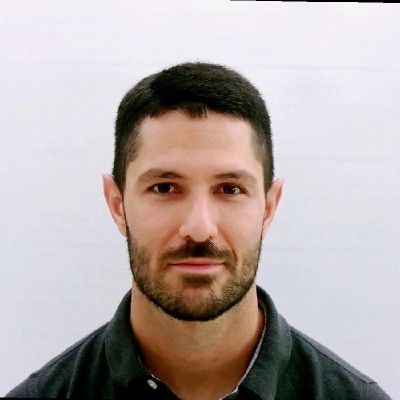Advanced Reservoir Characterization Using Drill-Cuttings-Based Advanced Image Analysis, Elemental Analysis, and AI Algorithms: A Case Study of the Orgánico Inferior and Cocina Members, Vaca Muerta Formation, Neuquén Basin, Argentina
Westside Houston
Speaker:
Seminar Date: Nov 18 2025
Registration Opens: Oct 14 2025 - Nov 18 2025
Time: 11:30 AM - 01:00 PM (US CDT)
Admission/Registration Link: None
Donation Link: None
Meeting/Webinar Link: None
Contact: Andrew Hind (VP Downtown, SPWLA Houston Chapter)
Corresponding: vpdowntown@spwla-houston.org
Fees: FREENOTES:
Address: 10402 Valley Forge Dr,
Houston, TX, USA
Free Lunch will be provided, please register at least 1 day before the seminar.
Please contact Andrew Hind (vpdowntown@spwla-houston.org) for any dietary restrictions.

ABSTRACT:
The unconventional reservoirs in the mixed carbonate/clastic basinal facies of the Vaca Muerta Formation (Tithonian-Valanginian) located in the Neuquén Basin (Argentina) are considered one of the most prolific shale-oil and shale-gas systems in the world. In combination with the Quintuco Formation, they represent prograding sequences composed of proximal carbonate facies (Quintuco) and distal shale facies (Vaca Muerta). With an extensive surface area of over 30,000 km², the Vaca Muerta Formation is a key focus for hydrocarbon exploration and production. Drill cuttings from two horizontal wells (one targeting the Orgánico Inferior member and the other the Cocina member) were subjected to a comprehensive and rapid reservoir characterization analysis using a new cuttings-based, standardized workflow. This workflow integrates high-resolution imaging, artificial intelligence (AI) algorithms, and X-ray fluorescence (XRF) elemental data, allowing for a consistently measured and detailed characterization of all drill-cuttings samples from both wells. Additionally, X-ray diffraction (XRD) analyses were conducted on selected samples to enhance the identification and classification of specific intervals of interest. The study successfully identified twenty-two (22) distinct lithotypes based on a combination of physical and geochemical parameters. These lithotypes were further classified into lithofacies associations and lateral well sedimentary packages, with detailed analysis highlighting significant vertical and lateral variations within the Orgánico Inferior and Cocina members. Tuffaceous, heterolithic, and calcareous components were distinguished using this approach, providing a cost-effective methodology for reservoir characterization. Variability in clay speciation, detrital silica content, and anoxia indicators were also identified, which were linked to deviations in the bit trajectory and geosteering during drilling. High mineral luminance peaks identified from image analysis of the ultraviolet (UV) light images, were interpreted as volcanic tuff layers, and corroborated by XRD data showing the presence of igneous minerals and clay minerals formed from volcanic glass weathering. These tuffaceous intervals, commonly observed in the Vaca Muerta Formation, are critical for understanding their effects on bit performance and potential trajectory deviations during drilling. This new drill-cuttings-based workflow offers an efficient, quantitative, consistently measured, and standardized approach to reservoir characterization. It has the potential to optimize well planning by defining target zones, improving the understanding of the formation’s depositional framework, and refining the static model as more wells and data become available. In the future, real-time sample processing in situ could be achieved as the model is further developed and validated.
BIOGRAPHY:
Dr. Agustín Kriscautzky is a Subsurface Geoscience Specialist at Geolog. After 15 years in academia, he transitioned to industry in 2024. His research has spanned various fields, initially focusing on REE- and HFSE-bearing minerals using techniques such as SEM, electron microprobe, and XRD. In recent years, Agustín has concentrated on Proterozoic carbonate systems, investigating their sedimentology, geochemistry, and diagenetic processes through detailed geochemistry and petrology. Additionally, he has contributed to diverse research projects ranging from volcanology and geomorphology to iron meteorites. Agustín has presented at numerous internationally recognized conferences and published articles in highly ranked journals.
Agustín holds a B.Sc. in Geology from the National University of Córdoba, Argentina, and both an M.Sc. and Ph.D. in Geology from The University of Tennessee Knoxville, USA, with a focus on carbonate geochemistry.
Throughout his academic career, Agustín taught a variety of courses, from introductory to advanced levels, as well as field geology. His field experience spans Argentina, Chile, USA, China, and South Africa. He now leverages his extensive background in his consulting role at Geolog to enhance the understanding of geological processes and features through cutting-edge and AI-driven technologies.
Outside of his professional life, Agustín is social, outgoing, and enthusiastic. He is passionate about maintaining a healthy and active lifestyle, traveling, and spending quality time with family and friends.
